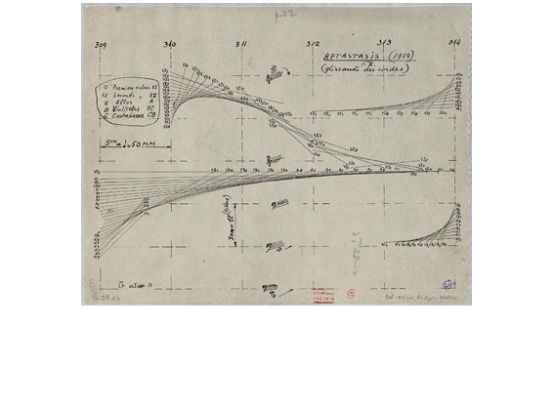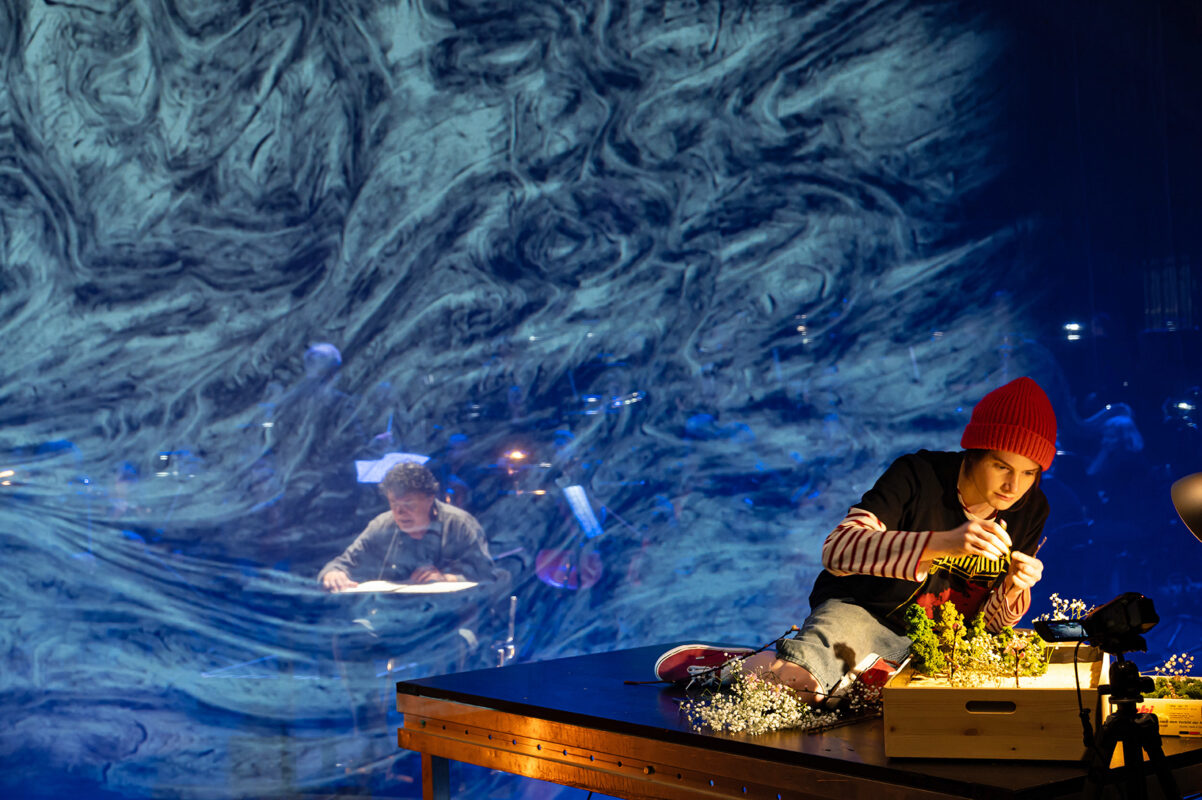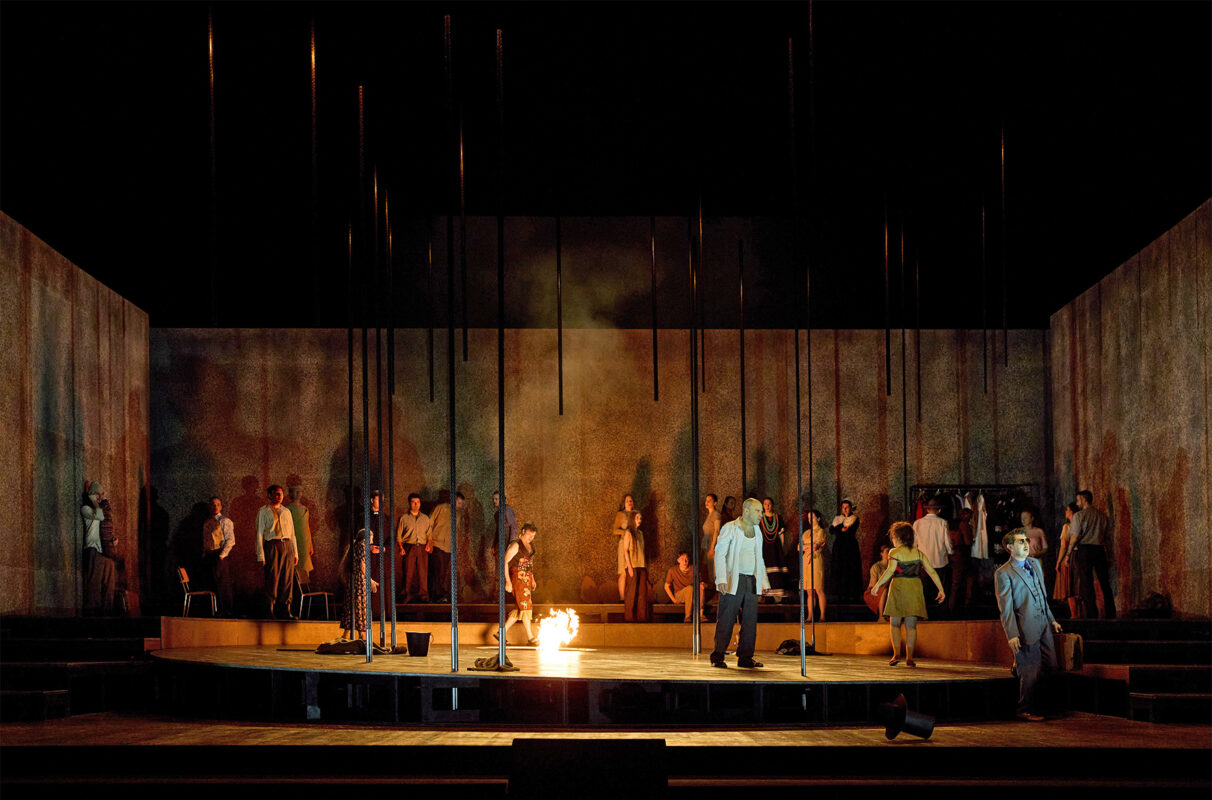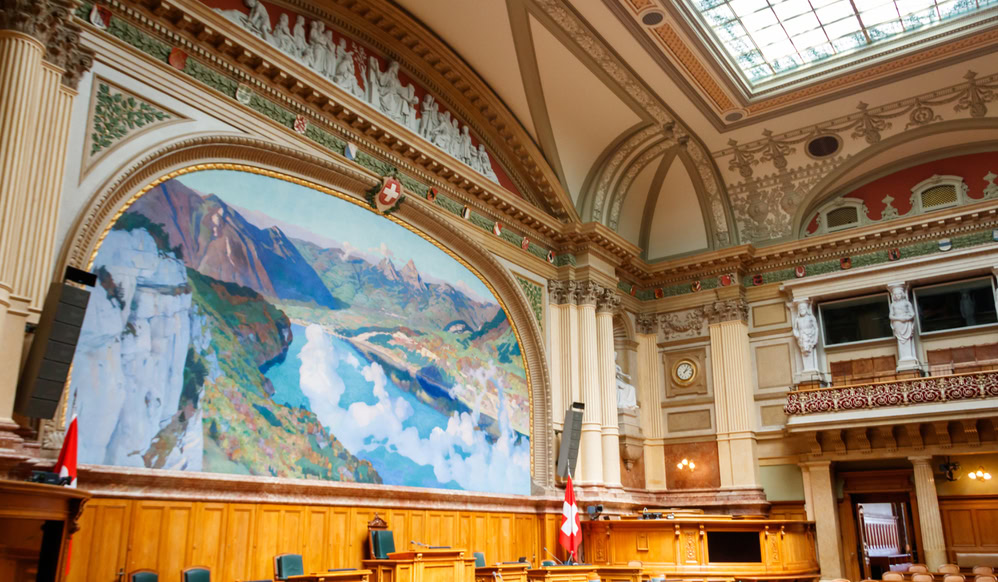Viewed without clichés
The composer, architect and engineer Iannis Xenakis (1922-2001) was the focus of an international symposium at the Zurich University of the Arts, which, accompanied by four concerts, pleaded for a cliché-free view of Xenakisʼ musical oeuvre.

Like pattering rain, powerful drum rolls penetrate even the furthest cracks of the sprawling Toni-Area at twelve o'clock. Six young percussionists, positioned in a semicircle on the spacious cascading staircase, the central passageway through the buildings, interpret Xenakis' Peaux from Pléiades (1978) and cast a spell over even those who just happen to be passing by.
The reception of Xenakisʼ musical oeuvre and his positioning in New Music have long been subject to various stereotypes. At the latest since the treatise published in 1963 musiques formellesin which he sought to capture musical structures in mathematical formulas, it was often prematurely viewed in terms of parallels between music and mathematics. The premiere of Metastasis ice for 61 instruments brought Xenakis his compositional breakthrough in Donaueschingen in 1955. The starting point of the work was hyperbolic curves, which later also formed the basis of the Philips Pavilion at the Brussels World Exhibition, which he created with Le Corbusier. This cemented another superficial view of his work, namely the unity of architecture and composition.
Anticipation of cross-divisional trends
The Zurich conference on February 23-24, 2017, on the other hand, focused on a wide variety of perspectives and the visionary diversity of his compositions. These are reflected not least in sensual, visual and transmedial qualities, as well as in references to the world and associative work titles. Using previously unexplored sketches, Benoît Gibson (Evora) showed how Xenakis arrived at compositional decisions in a multi-stage and playful manner. The interpretation of the scores, which is often reduced to formalized aspects, is diametrically opposed to this processuality. Jörn Peter Hiekel emphasized that the world references created by Xenakis himself were given too little attention in common Xenakis images. An Metastasis ice he showed, for example, how Xenakis introduced the concept of the masses into music for the first time by musically processing his own biographical experiences of the political upheavals of the Second World War.
Using the legendary IBM 7090, Xenakis pioneered the possibilities of the computer for compositional processes back in the 1960s. Since then, he has been considered a pioneer among computer-based composers. Philippe Kocher, however, sees Xenakisʼ pioneering achievement not in mathematical formalization or exact repeatability, but in his early turn to non-musical methods.
How can three-dimensional hyperbolic curves be translated into traditional musical notation? Xenakisʼ graphic scores create an open space of interpretation through multi-layered visual qualities. "The linking of spatial and musical imagination is actually a transdisciplinary process", Lars Heusser stated in his contribution You have the good fortune of being an architect was established. Heusser illustrated the fact that the translation of the sketches into the rigid corset of the classical stave leads to a shift from ambiguity to unambiguity with concrete score details.
With his transmedia works, Xenakis also anticipated trends in contemporary interdisciplinary art. The vision of interweaving sound, space and light to create cosmic dimensions, in the spirit of the space travel euphoria of the seventies, was realized in various Polytopes around. As a conductor at the mixing desk, he directed room-filling productions that combined sound with light and laser effects. The spectacular highlight was the 1978 Le Diatopewith the performance of La Légende dʼEer, geste de lumière et de son, for the opening of the Pompidou Center. "Le Diatope is now just a myth and lives on in fragmentary stories told by guests at the performance," said Nicolas Buzzi and attempted an approximation at the night concert. The planned multimedia realization could not take place. The sound experience was all the more captivating: twelve loudspeakers surrounded the audience, which was freely distributed throughout the hall, creating such a suction effect that it almost created a multi-sensory perception.
Xenakis repeatedly emphasized the idea of the musical work as a living organism. At the soloists' concert, Martina Schucan (cello) and Ermis Theodorakis (piano) breathed new life into key works such as Kottos for cello solo (1977) and Herma for piano solo (1961) literally comes to life through her virtuoso interpretation.
A clichéd, narrow view of Xenakisʼ multifaceted musical oeuvre could definitely be reduced to absurdity at the Zurich conference.
La Légende dʼEer, geste de lumière et de son was released on DVD by Mode Records in 2005. A review by Thomas Patteson with many pictures can be found here:








